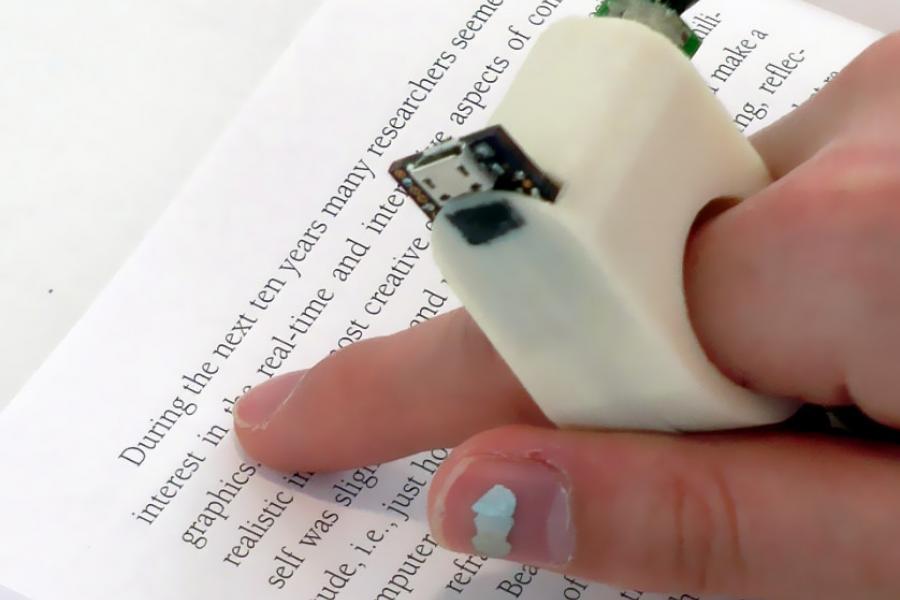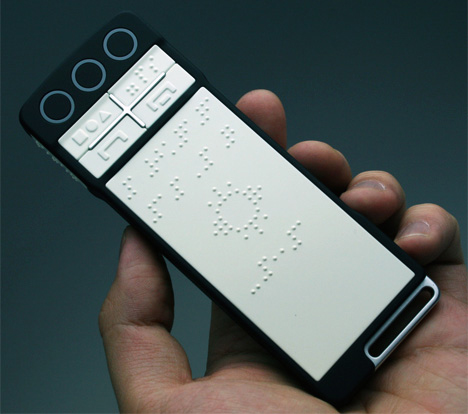Speech-to-Text Devices for Low Vision: Bridging the Communication Gap
Speech-to-Text Devices for Low Vision: Bridging the Communication Gap
Blog Article
Empowering Freedom With Assistive Innovation for the Blind
The assimilation of assistive modern technology right into the lives of individuals with visual impairments stands for a substantial innovation in advertising freedom and self-sufficiency. From cutting-edge display visitors to advanced clever canes, these tools not only boost day-to-day navigation and communication yet additionally equip customers to involve meaningfully in numerous aspects of life. As we check out the myriad advantages and real-world applications of these innovations, it comes to be critical to analyze the underlying factors that add to their performance and the potential for future developments in this essential field.
Introduction of Assistive Modern Technology

The growth of assistive innovation is grounded in principles of inclusivity and empowerment. Developments in software program, equipment, and sensory improvements give individuals with choices tailored to their specific needs. From screen visitors that convert message to speech, to tactile tools that share information through touch, these tools change the means people involve with their environments.
Along with sensible applications, assistive modern technology fosters greater social inclusion and engagement in numerous fields, consisting of education and learning and work (Screen readers for the blind). As study and advancement remain to progress, the potential for assistive innovation to better boost the lives of visually damaged people stays promising, leading the way for an extra equitable society where every person can grow
Types of Assistive Devices
A variety of assistive gadgets have actually emerged to support individuals with visual impairments, each created to satisfy certain needs and improve daily performance. These devices range from low-tech remedies to modern innovations, supplying varied options for customers.
Low-tech gadgets include magnifiers and large-print materials that help in reading and writing. Braille tools, such as Braille stylus pens and slates, make it possible for tactile reading and interaction. Positioning and movement help, like white walking canes, assist users navigate their atmosphere safely.
On the higher end of the range, electronic magnifying systems and screen viewers use substantial assistance. Digital magnifiers enable individuals to enlarge text and photos on displays, while screen readers transform electronic material into manufactured speech, facilitating accessibility to info on smart devices and computer systems.
Mobile phone applications also play an important function, providing attributes like text recognition and navigation assistance. Wearable modern technology, such as wise glasses geared up with augmented fact, is becoming an encouraging device to improve situational understanding.
Benefits of Assistive Innovation
The integration of assistive modern technology dramatically enhances the lifestyle for people with visual impairments. These modern technologies equip customers by advertising self-reliance, enabling them to browse their atmospheres better and do everyday jobs with higher ease. Display readers and magnification software program permit individuals to gain access to electronic info, cultivating academic and specialist chances that may have formerly been out of reach.
In addition, assistive devices such as clever canes and GPS applications supply real-time navigating support, boosting movement and safety and security. This raised autonomy not only enhances self-worth yet also encourages social interaction, permitting customers to participate more completely in their areas.
Assistive technology also helps with interaction, aiding users get in touch with others with voice recognition and text-to-speech applications. This capability is essential for keeping relationships and accessing essential details.
In addition, the customization walk in eye doctor options readily available with many assistive technologies make sure that individuals can customize tools to their specific needs, even more enhancing usability and effectiveness. Generally, the advantages of assistive innovation for individuals with visual problems are extensive, promoting a much more inclusive culture where everyone can seek their objectives and goals.
Study and Success Stories
Highlighting the transformative impact of assistive modern technology, many case researches highlight exactly how individuals with visual disabilities have efficiently integrated these devices right into their everyday lives. One compelling instance includes an university pupil that made use of display analysis software to browse on the internet sources and academic materials successfully. This technology not just facilitated her education yet additionally enhanced her self-confidence in participating in discussions and group projects.
Another study includes a directory professional who employs a smartphone application developed for navigating and object acknowledgment. By utilizing this application, he has actually reclaimed autonomy in both his personal and workplace, enabling him to commute individually and engage with associates extra effectively.
Additionally, a retiree shared her experience with braille e-readers, which enabled her to access a large range of literature and stay gotten in touch with her community through book clubs.
These success tales emphasize the crucial role of assistive technology in promoting self-reliance, improving lifestyle, and advertising social combination for individuals with visual problems (Voice-activated assistive devices). By accepting these ingenious tools, customers can get rid of challenges and confiscate possibilities that contribute to their personal and specialist gratification

Future Patterns in Assistive Technology
Development in assistive innovation is poised to redefine the landscape of support for individuals with visual impairments. Emerging trends emphasize the assimilation of artificial intelligence (AI) and artificial intelligence, which enhance the functionality of gadgets that help with navigating and info access. For instance, AI-driven applications are now capable of analyzing aesthetic data in real-time, making it possible for customers to engage with their setting extra independently.
Additionally, the growth of wearable technology is advancing rapidly. Smart glasses outfitted with enhanced truth (AR) can give audio summaries of surroundings, transforming exactly how individuals interact with public areas. These devices not only promote freedom yet additionally foster social addition.
Furthermore, the Internet of Points (IoT) is making homes smarter, permitting seamless connection in between everyday devices and assistive gadgets. This connectivity equips individuals find out by making it possible for voice-activated controls and automated actions tailored to private requirements.
Conclusion
Finally, assistive technology plays a crucial function in empowering individuals with visual problems by improving their self-reliance and interaction with their surroundings. The varied variety of applications and tools available not just promotes navigation and interaction however also promotes social integration and possibilities for personal and specialist growth. As innovations continue in this field, the potential for enhancing the lifestyle for those with aesthetic problems will broaden, fostering greater autonomy and empowerment.

Report this page